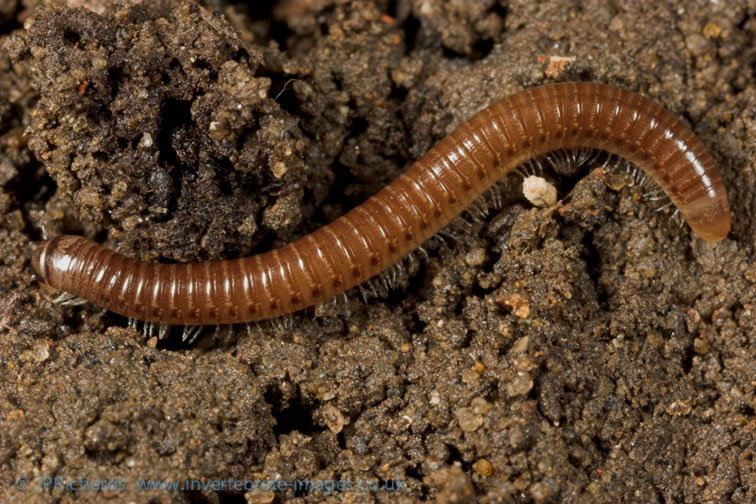Cylindroiulus britannicus (Verhoeff, 1891)
Status:
GB IUCN status: Least Concern
ID Difficulty
Identification
This millipede, lacking a projecting telson, is superficially similar in appearance to the closely related C. latestriatus (and also the scarce C. parisiorum and C. truncorum).
Although they differ subtly in morphology, these four species are only reliably identified by dissection of adult specimens, ideally males.
This species is a known host for the ectoparasitic fungus Rickia laboulbenioides (Storey, 2019; Gregory, 2021). See image.
Distribution
Although C. britannicus is a widespread species in Britain and Ireland, records are clustered around the locations of active myriapodologists capable of distinguishing the species. Kime (1999) described the species as “wild” in Britain and Ireland but synanthropic in continental Europe.
The species appears to be most frequent in Britain and Ireland but is known also from widely scattered locations across northern Europe. There are two Portuguese records (Kime, 1990a) and specimens have recently been collected in north west Spain which, although it has yet to be found in western France, may suggest the species originally had a strict Atlantic distribution. It has also been introduced to New Zealand, North America and South Africa (Blower, 1985).
Habitat
Although 69% of the British and Irish records are from rural sites, analysis of the recording scheme data suggests a strong relationship with urban sites as elsewhere in Europe. Although this species has been collected from purely synanthropic sites such as compost heaps and glasshouses, it is more usually collected from beneath the bark of standing and fallen dead wood or in the soil close to fallen timber, even in urban locations.
Phenology
Animals probably mature after two or three years as with C. latestriatus. Adults have been found throughout the year. This raises the possibility that, as with C. latestriatus, females may survive beyond their first breeding season.
This species account is based on Lee (2006).
Links
MilliBase - Global catalogue of Millipedes: https://millibase.org/aphia.php?p=taxdetails&id=945199






